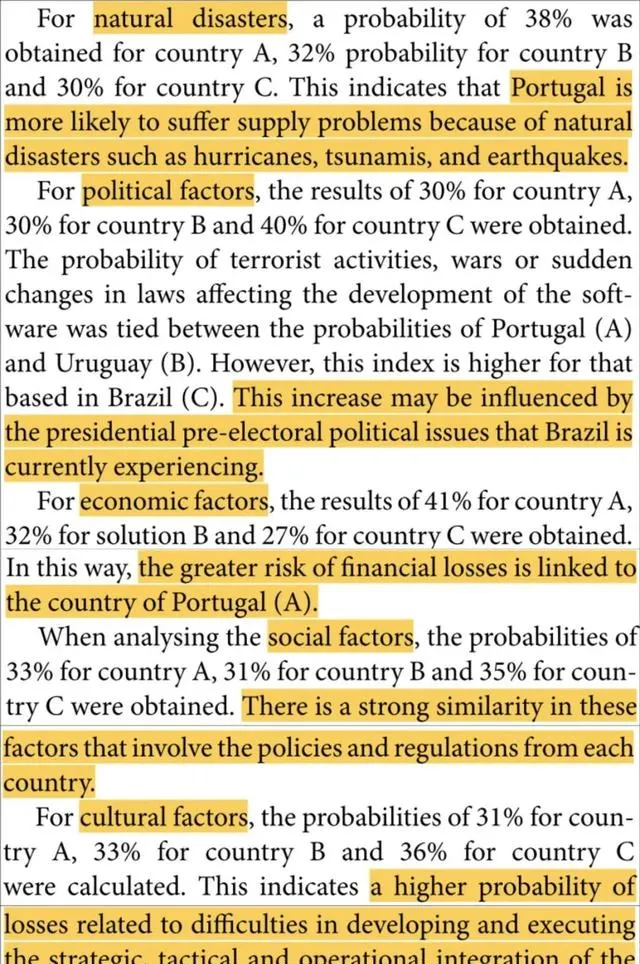
分享兴趣,传播快乐,
增长见闻,留下美好。
亲爱的您,这里是LearingYard学苑!
今天小编为大家带来「精读期刊论文【基于贝叶斯方法的软件供应链风险评估】的7.2失效概率评估(1)」。
欢迎您的访问!
Share interest, spread happiness,
increase knowledge, and leave beautiful.
Dear, this is the LearingYard Academy!
Today, the editor brings the "7.2 probability failu (1) of the journal paper 'Risk assessment in software supply chains using the Bayesian method'".
Welcome to visit!

一、内容摘要(Content summary)
本期推文将从思维导图、精读内容、知识补充三个方面介绍精读期刊论文【基于贝叶斯方法的软件供应链风险评估】的失效概率评估(1)。
In this issue, the tweet will introduce the probability failu (1) of the journal paper "Risk assessment in software supply chains using the Bayesian method" from three aspects: mind map, detailed reading content, and additional knowledge supplementation.
二、思维导图(Mind Mapping)

三、精读内容(Detailed Reading Content)
本次推文将为大家带来该期刊论文的失效概率评估的前半部分内容。
This tweet will bring you the first half of the journal paper on Probability of Failure Assessment.
在该部分,作者首先介绍了失效概率评估所用到的工具,并且在选择工具后,考虑了外部风险因素(自然灾害,政治因素,经济因素,社会因素和文化因素)和内部因素(参与者,软件组件,操作和维护,供应链)。对于每一种情况,都编制了一份调查问卷,其中的项目按风险因素和国家列出,以分析软件供应链。
In that part, the authors start by describing the tools used for the probability of failure assessment and, after selecting the tools, external risk factors (natural disasters, political, economic, social and cultural factors) and internal factors (participants, software components, operation and maintenance, supply chain) were considered. For each case, a questionnaire with items listed by risk factor and country was developed to analyze the software supply chain.

其次,作者对调查问卷的具体内容进行阐述。对问题的回答采用线性量表,其中1为分配给问题的最低指数,5为与问题最相关。并且,每个问题都有相应的权重,通过将特定问题的受访者指数之和除以答案总数来计算因素概率失败。对于每个风险因素,依次提出三个相关问题。问卷调查的结果如下表9所示。
Next, the authors elaborate on the specifics of the questionnaire. The responses to the questions were on a linear scale, where 1 is the lowest index assigned to the question and 5 is the most relevant to the question. Moreover, each question is weighted accordingly, and the factor probability failure is calculated by dividing the sum of the respondents' indices for a given question by the total number of answers. For each risk factor, three relevant questions were asked in turn. The results of the questionnaire are shown in Table 9 below.

就表9中的结果而言,作者对外部因素(自然灾害、政治因素、经济因素、文化因素)进行了相关分析。A国的软件供应链受自然灾害、金融损失风险较大,C国受政治、文化因素影响较大,每个国家的政策和法规涉及的这些因素有很大的相似性。
With respect to the results in Table 9, the authors have correlated the external factors (natural disasters, political factors, economic factors, and cultural factors).The software supply chain in country A is more exposed to the risk of natural disasters and financial losses, and country C is more affected by political and cultural factors, and there is a great deal of similarity in the policies and regulations of each country that deal with these factors.

四、知识补充——失效概率评估(Knowledge Addition - Failure Probability Assessment)
失效概率评估是指在工程和系统设计中的一种方法,用于估计特定组件、设备或系统在给定时间内发生失效的概率。失效概率评估通常用于可靠性工程中,旨在评估系统的可靠性和稳定性。
Probability of failure assessment refers to a methodology used in engineering and system design to estimate the probability of failure of a particular component, equipment, or system within a given time period. Probability of failure assessment is commonly used in reliability engineering to assess the reliability and stability of a system.


今天的分享就到这里了,
如果您对文章有独特的想法,
欢迎给我们留言。
让我们相约明天,
祝您今天过得开心快乐!
That's all for today's sharing.
If you have a unique idea about the article,
please leave us a message,
and let us meet tomorrow.
I wish you a nice day!
参考资料:ChatGPT、百度百科
参考文献:
André Felipe Henriques Librantz, Ivanir Costa, Mauro de Mesquita Spinola, et al. Risk assessment in software supply chains using the Bayesian method [J]. International Journal of Production Research, 2021, 59(22): 6758-6775.
本文由LearningYard学苑整理并发出,如有侵权请在后台留言!
文案| Ann
排版| Ann
审核| Whisper











